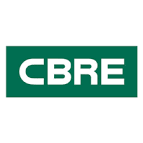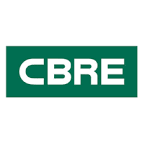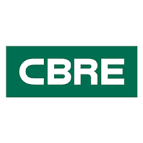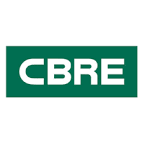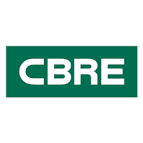Information
-
Audit Title
-
Client / Site
-
Conducted on
-
Prepared by
-
Location
-
Personnel
Aerial Lifts
-
Is there a written Aerial Lifts program? If the CBRE Corporate Program is used, has it been modified to meet the location operation needs & exposures?
-
Do employees operate, work in, on, or near aerial work platforms (AWP) or lifts (e.g. cherry picker, scissor lift, or boom lift)?
-
Have operators completed a general training course including inspection, application, and the recognition and avoidance of hazards associated with the Aerial Lifts?
-
Do operators receive AWP model-specific familiarization on the particular model he/she will be operating?
-
When “Fall Protection” is required for AWP operations, is the operator properly trained and equipped?
Management
-
Availability of CBRE Management Standards, policies and procedures readily accessible and understood<br>
-
Evidence that all national legal and regulatory requirements been identified, recorded and attained
-
Evidence that all accidents, incidents and near misses have been reported
-
Evidence that Ia HS&E Legal Register available
-
Evidence that CBRE, contractor and client H&S roles and responsibilities have been clearly defined, agreed to and attained. Reviewed annually.
-
Evidence that all high-risk activities (inc. non-routine) and plant have been identified and risked assessed
-
Evidence that ProcessMap software is available and used by the management team
-
Evidence that formal maintenance and inspection programs are implemented
-
Evidence that H&S documentation / records are properly controlled and held by the management team.
-
Evidence that processes are in place to ensure all accidents, incidents and near-misses have been reported and investigated. Lessons learnt are communicated to all relevant parties
Information Exchange
-
Evidence that the Responsible Person has prepared and maintains an accurate schedule of areas under management (with drawings) and has briefed the Facilities Manager
-
Evidence that Health and Safety risks at the property have been communicated with appropriate parties (Contractors, Tenants etc.)
-
Evidence that the Responsible Person regularly exchanges H&S information with the client, tenants & contractors.
Training & Competency
-
Evidence that the responsible person has identified staff HS&E training needs and that training programs have been developed and delivered according to the needs.
-
Evidence that contractors have identified and undertaken relevant HS&E Training.
-
Evidence that new staff induction program is in place and documented.
Emergency Preparedness & Response
-
Evidence that the Responsible Person has identified, assessed and documented all potential emergency and crisis situations.
-
Evidence that emergency plans have been prepared, properly communicated and tested, feeding lessons back into the review process.
-
Is HSE notified of emergencies in a timely manner?<br>
-
Does the facility have a written emergency preparedness plan? For operations involving CBRE employees working at a customer's facility; Is there a documented procedure to notify CBRE management if an emergency occurs?<br>
-
Are potential emergencies identified in the plan? (Earthquake, Tornado, Snow Storm, Chemical Spill, Fire, Tsunami, etc.)<br>
-
Are evacuation maps documented in the facility? <br>
-
Does an evacuation plan exist including accountability for all persons on site?<br>
-
Are emergency drills completed annually and evaluated for their effectiveness?<br>
-
Are Employees trained annually on the emergency response plan?<br>
-
Does the location have a current list of outside emergency services and is it readily available?<br>
Contractor Management
-
Prior to beginning work, do contractors agree in writing to meet CBRE, Client, and regulatory requirements?<br>
-
Evidence that contractors working on site are formally verified and assessed for their HS&E credentials.
-
Evidence that site orientating has taken place before the contractor start work
-
Evidence that contractors’ have provided up-to-date, site-specific risk assessments and safe systems of work and copies are available with the responsible person.
-
Are pre-task meetings held with contractors to review the job hazards, control measures, and PPE requirements to ensure the work is done safely?<br>
Risk Management and Risk Assessment
-
Evidence to suggest High Risk activities have been subject to Risk Assessment (confined spaces, hot work, lone working, work at height, work on electrical equipment, working in areas which contain asbestos etc.
-
Is a Location Health and Safety Assessment available and have the risks identified been adequately controlled.
-
Evidence to suggest routine activities have been subject to Risk Assessment
Access & Security
-
Evidence that proper security controls are in place to prevent unauthorized access onto the site, including security patrols and CCTV where appropriate
-
Evidence that a system is in place for signing in of contractors and authorising them to work (as well as any other necessary controls.
Asbestos Management
-
Evidence that there is clarity surrounding the presence of asbestos on site (Asbestos Survey by a competent contractor, register and maps indicting location.
-
Evidence that tenants are advised of asbestos materials in their demised areas.
-
Evidence that information is passed to contractors.
-
Does the location have any presence of Asbestos and has an Asbestos Survey been conducted by a competent contractor?
-
Is there a written Asbestos Safety program? If the CBRE Corporate Program is used, has it been modified to meet the location operation needs & exposures?
-
Do applicable employees receive asbestos awareness training including what to do in the event asbestos is found or disturbed?
-
Does this location have documentation showing all removal procedures were conducted according to regulatory protocols for asbestos removal, including record keeping, contractor safety training and proper disposal of asbestos containing material?
Ergonomics
-
Check to ensure workstations and the working environment are suitable and in good order
-
Evidence that the Responsible Person has identified all Display Screen Equipment (DSE) users employed by CBRE’s and that suitable and current DSE training and assessment arrangements in place for all CBRE’s DSE Users
-
Is appropriate manual handling equipment provided?<br>
-
Is there a written Ergonomics program? If the CBRE Corporate Program is used, has it been modified to meet the location operation needs & exposures?<br>
-
Are Ergonomics assessments done on all ergonomic recordable and first aid incidents?<br>
-
Are Team members trained to perform ergonomics job assessments?<br>
-
Are Employees educated and trained annually on manual lifting and handling safety?<br>
-
Are heavy or frequently used items stored between knee and shoulder height?<br>
Electrical Services and Portable Electrical Equipment
-
Verify the fixed installation electrical wiring is maintained & tested to legal standards
-
Verify systems are in place to ensure electrical installations and equipment is being maintained safely. (competent staff, no live working, permits to work where appropriate, lock out tag out) etc.
Hazardous Substances
-
Assessments carried out by those responsible (contractors or CBRE’s)
-
Verify FM / contractors hold an inventory of all hazardous substances used or held on site, together with hazard data sheets
-
Those using / coming in to contact with informed of risks and controls.
Housekeeping
-
Verify all areas kept in a clean and tidy condition
-
Verify gangways and corridors (especially fire escape routes) kept free of obstructions
-
Verify adequate facilities provided for storage of materials and equipment
-
Verify regular housekeeping inspections carried out and documented
Fire
-
Have all fire hazard potentials been identified for the location?
-
Fire Risk Assessment completed / reviewed
-
All fire systems (Alarm, Detection, Sprinklers are being maintained and operating effectively<br>
-
Verify sources of ignition under control<br>
-
Means of escape available and operating effectively<br>
-
Fire assembly point identified and signed<br>
-
Fire wardens appointed and trained<br>
-
Emergency plans in place
-
Regular fire drills undertaken every 6 months
-
Fire safety records kept and maintained
-
Are all fire alarm pull stations and fire extinguishers accessible?
-
Are Flammable liquids stored in flammable storage cabinets?
-
Are any Flammable/combustible liquids stored in spray booth (except one day supply)?
-
Is the local fire department acquainted with the facility and its specific hazards?
First Aid
-
Are Medical personnel available for advice and consultation for health concerns?
-
Verify facilities are available for the provision of first aid. Places for treatment, trained First Aiders and First Aid kit etc.
-
First aid supplies are routinely inspected and replenished?
-
Is sufficient medical treatment equipment and supplies present, site liability is understood if free distribution of OTC medicines is taking place?
Legionella
-
Schematic drawings of water systems available
-
Verify water hygiene management system is in place where legionella-sensitive water systems present
-
Verify assessments are undertaken and reviewed appropriately by independent and accredited specialist consultants
-
Cooling tower(s) registered with local authority (UK only)
Work Environment
-
Verify the workplace is clean & free from obstructions & trip hazards
-
Verify workplace adequately lit
-
Checks to ensure comfortable temperatures and ventilation levels in work areas
-
Verify furniture and fittings in sound condition
Lifts & Escalators
-
Verify insurance inspection certificates available and up to date
-
Verify lifts and escalators undergo routine maintenance and thorough examination to legal standards
Slips Trips & Falls
-
Verify carpets, nosing’s and structure in sound condition on stairs and steps
-
Verify Floor passageways and roadways are free from detects and pot holes.
Bloodborne Pathogens
-
Is there a written Bloodborne Pathogen program? If the CBRE Corporate Program is used, has it been modified to meet the location operation needs & exposures?
-
Are Biohazardous clean-up kits/supplies available on site?
-
Is Annual training done for all first aid responders?
-
Vaccinations for Hepatitis 'B' are offered and accepted by voluntary first aid responders?
-
Does the facility maintain signed declination forms for all employees that did not wish to have a Hepatitis B vaccine?
-
Are biological waste storage bags/proper disposal methods in use?
Building Safety & Security
-
No access/egress concerns noticed, including the parking lots and sidewalks?
-
Any building and grounds safety concerns noticed (including load capacities, marked aisles, guarded openings, and unblocked stairs, etc.)?
-
Any buildings & grounds security concerns noticed?
-
Any walking or working surface concerns?
-
Do all areas have adequately lighting?
-
Hazard warning signs are posted prominently close to the source of the hazard and well maintained?
Compressed Gas
-
Does the facility have written safety procedures for the safe handling of compressed gas cylinders?
-
Are all valve protection caps and plugs on compressed gas cylinders and portable tanks kept in place when the cylinder is not connected for use and are the cylinders prevented from tipping?
-
Are compressed gas cylinder conditions marked (full, in-service, empty, leaker)?
-
Are oxygen cylinders stored away from highly combustible material, especially oil and grease, or any other substance likely to cause or accelerate fire? Are oxygen cylinders in storage separated from fuel-gas cylinders or combustible materials (especially oil or grease), a minimum distance of 20 feet (6.1 m) or by a noncombustible barrier at least 5 feet (1.5 m) high having a fire-resistance of 1-hour?
Chemical Safety
-
Does operational local ventilation exhaust (vapor/fume control) exist on potential exposure situations?
-
Are spill containment & neutralization materials near chemical storage and usage areas?
-
Is PPE being used when dealing with chemicals?
-
Are chemical storage areas ventilated, incompatible chemicals separated, no expired chemicals on hand?
-
Are areas where food is consumed free of toxic chemicals and/or other health hazards?
-
Are eye wash and shower stations nearby affected work and storage areas?
-
Are areas where food is consumed free of toxic chemicals and/or other health hazards?
Combustible Dust
-
Has the facility performed a risk evaluation for combustible dust?
-
Are areas where combustible dust accumulates cleaned routinely?
-
Does the facility have a written combustible dust program?
Confined Spaces
-
Does the facility have an internal rescue team or outside services that can respond to an emergency in a timely manner relative to the hazards posed in the confined space and are they supplied with the appropriate rescue equipment?<br>
-
Is there a written confined space program? If the CBRE Corporate Program is used, has it been modified to meet the location operation needs & exposures?
-
Has a written inventory of confined spaces been developed and documented?
-
Have all Confined Spaces been evaluated (i.e. hazardous atmosphere, engulfment, trapping or asphyxiation) and properly labeled? <br>
-
Is there a written permit process for limiting access to confined spaces that an employee must enter? (Also, verify through employee interviews)<br>
-
Are Confined Space Permit forms available and used?<br>
-
Are full body harnesses and lifelines available (internal employee entry)?<br>
-
Is Ventilation equipment available (internal employee entry)?<br>
-
Is continuous air monitoring equipment available and calibrated annually - (Internal employee entry - O2, LEL, CO and/or H2S)?<br>
-
Does the facility provide certified training for authorized entrants, attendants, rescue personnel, and entry supervisors and persons authorized to perform atmospheric monitoring and are the training materials and records of training kept? <br>
-
Is there a written process for rescuing employees who must enter confined spaces? (If rescue operations are completed by CBRE, review documented drills)<br>
-
Are all appropriate employees trained annually on confined space awareness?<br>
Cranes & Hoists
-
Are frequent (daily, monthly) and periodic (monthly, annual) maintenance safety inspection completed on cranes and hoists in accordance with applicable regulations, manufacturer’s recommendations, and/or consensus standards?<br>
-
Does the facility have a method to designate what employees are permitted to operate cranes?<br>
-
Is there documentation of the annual inspection of all slings and rigging equipment?<br>
-
Have employees that use cranes/hoists been trained in the proper handling of the equipment?<br>
Driver Safety
-
Is there a written Driver Safety program? If the CBRE Corporate Program is used, has it been modified to meet the location operation needs & exposures?<br>
-
Are employees trained on defensive driving techniques?<br>
Electrical Safety
-
Does the facility maintain a minimum 36 inch deep by 30 inch wide clear area in front of all electrical panels and disconnects?<br>
-
Is there a written Electrical Safety program? If the CBRE Corporate Program is used, has it been modified to meet the location operation needs & exposures?<br>
-
Are ground fault circuit interrupters used on outdoor outlets and outlets near a water source?<br>
-
Are explosion proof electrical fixtures used in spray paint areas, flammable liquids storage/dispensing areas, etc.?<br>
-
Are employees working on energized equipment trained & qualified?<br>
-
Has an Arc flash hazard analysis been completed?<br>
-
Do all qualified employees have the proper electrical PPE and is there evidence that it is used and maintained properly?<br>
-
Extension cords are used appropriately and in good condition?<br>
-
Are unused openings in electrical enclosures /fittings / panels closed with appropriate covers, plugs or plates?<br>
-
Are electrical panels properly labeled?<br>
-
Are Grounding & Bonding wires used where flammable liquids are being dispensed?<br>
Equipment Inspection
-
Is Emergency lighting inspected monthly?<br>
-
Evidence of Powered Industrial trucks / daily checklists?<br>
-
Evidence of monthly & annual Hoists Inspections?<br>
-
Evidence of Slings & Lifting Devices annual inspection?<br>
-
Evidence of Portable Elevated Work Platforms annual inspection?<br>
-
Are Fire Extinguishers being inspected monthly?<br>
-
Are Eyewash Stations & Emergency Showers being inspected monthly?<br>
-
Are Dock-locks inspected monthly (if applicable)?<br>
-
Are Ladders and mobile ladder stands inspected quarterly?<br>
-
Are Fume Hood/ spray booth air flow rate testing done quarterly or flow gauge installed (100 FPM face-velocity)?<br>
-
Are Combustible/flammable dip tank ventilation inspections done including hood/ductwork and air flow / quarterly?<br>
Excavation & Trenching
-
Is there a written Excavation & Trenching program? If the CBRE Corporate Program is used, has it been modified to meet the location operation needs & exposures?<br>
-
Does the program address the safe work rules to prevent cave-ins?<br>
-
Are underground installations (sewer, fuel, gas, electrical, water, telephone, etc.) located and marked before digging?<br>
-
Are employees who work on excavations trained in the four soil classifications?<br>
Fall Protection
-
Is there a written Fall Protection program? If the CBRE Corporate Program is used, has it been modified to meet the location operation needs & exposures?<br>
-
Do employees using fall protection receive annual training in the safe operation of their equipment or whenever a change in equipment or procedures occurs?<br>
-
Has a list of tasks involving elevated work including ladders been identified?<br>
-
Does a Fall protection equipment list exist?<br>
-
Annual equipment inspection by qualified person documented?<br>
-
Affected employees are educated and trained annually on equipment limitations and inspection requirements?<br>
Guarding
-
Does the location have a written barricade policy to protect employees when any of the following hazards are present: open man-hole or pit; overhead work from scaffolds, ladders or man lifts; excavations; exposed electrical or mechanical equipment; tripping hazards created; harmful substance spill?<br>
-
Machine guards are in place and properly adjusted for power tools e.g. grinders, saws, etc.?<br>
-
Is machine guarding adequate to protect from flying objects/splashing?<br>
-
Is there a means to ensure the design of all equipment and/or machinery include provisions for assuring that safeguarding devices, such as interlocks, (when used) cannot be easily defeated, and they fail in a safe manner?<br>
-
Are all points of operation, ingoing nip points, rotating parts, flying chips, and sparks properly guarded to protect employees?<br>
-
Is there a regular inspection for machines/equipment to ensure guarding is in place?<br>
